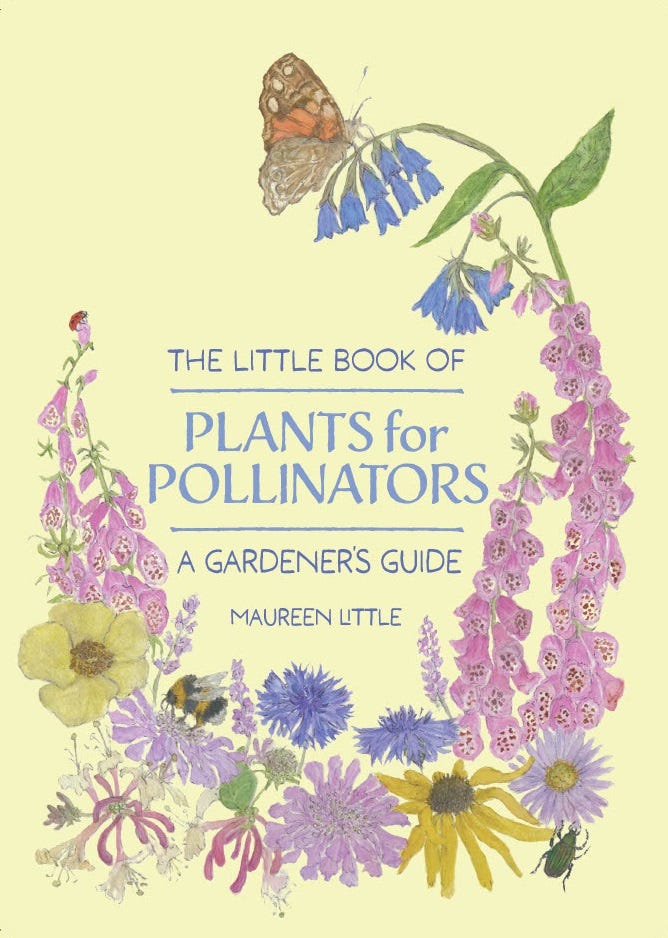Welcome to my second batch of articles for May which include:
· World Bee Day
· the Chelsea Chop
· a look at gooseberries – and a recipe
It will soon be World Bee Day!
In 2018 the United Nations designated the 20th May World Bee Day to raise the awareness of the importance of bees and other pollinators in the ecosystem. (https://tinyurl.com/ybm6a933)
So it’s timely to have a look at some bees and why they are so important.
A saying often attributed to Einstein, although apparently he never actually said it (go to https://tinyurl.com/y7hfzo64 for some interesting research on the matter), is that: ‘If the bee disappeared off the surface of the globe then man would only have four years of life left. No more bees, no more pollination, no more plants, no more animals, no more man.’ Whether or not he said it is in some ways irrelevant, because this misquotation has probably done more to bring the subject to the attention of the general public than any other article, book or learned paper ever could have done.
There is no doubt that bees and other insects are vital for the pollination of a whole range of plants and consequently are crucial to the survival of a vast network of flora and fauna, including mankind, which feeds on those plants. The majority of plants need bees or other pollinating insects in order to reproduce - only 12% of plants are wind pollinated – so we would be somewhat scuppered without them.
There are some 20,000 species of bees worldwide, and in the UK alone, there are more than 250, and of those, over 90% are solitary bees. Solitary bees are what their name implies – each nest comprises the work of a single female bee. Although solitary bees make up the vast majority of bees they are not as conspicuous as their cousins, the social bees - bumblebees and honeybees - so the chances are that if you were to see one you might not recognise it as a bee anyway.
Solitary bees comprise mainly mining bees which excavate their own nest, and cavity bees, (including mason bees, leafcutter bees (top left below) and carder bees (top right below)) which nest in existing sites, such as hollow plant stems. Solitary queen bees overwinter on their own to emerge the following year to produce offspring to continue the line.
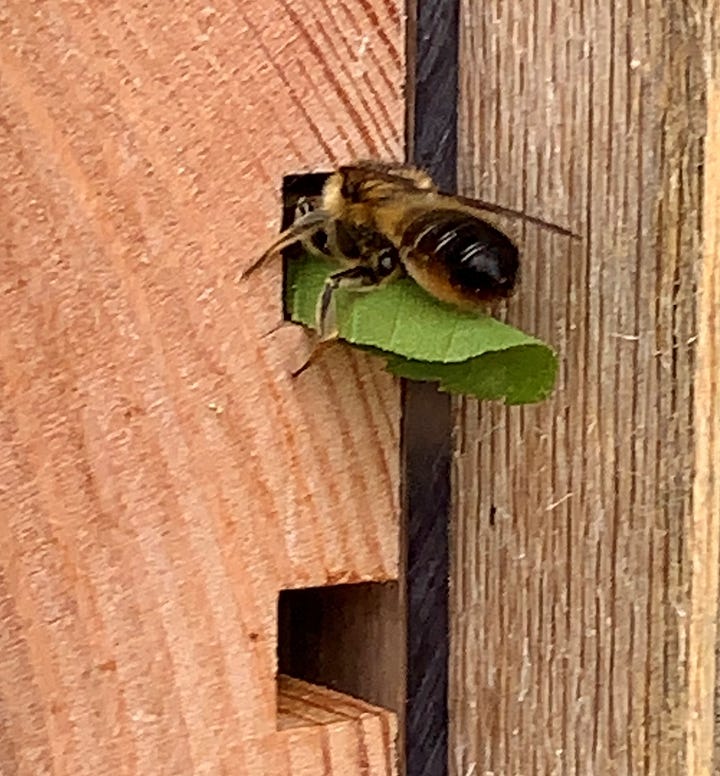
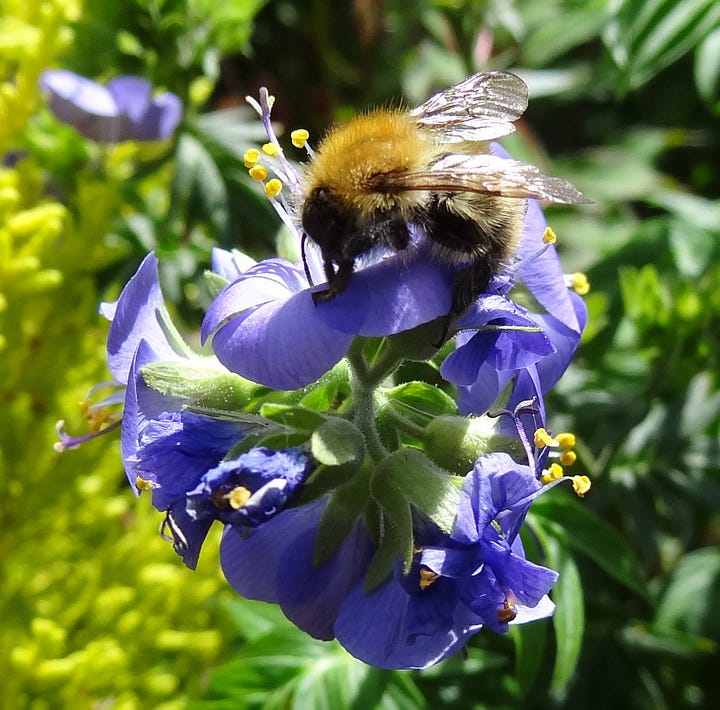
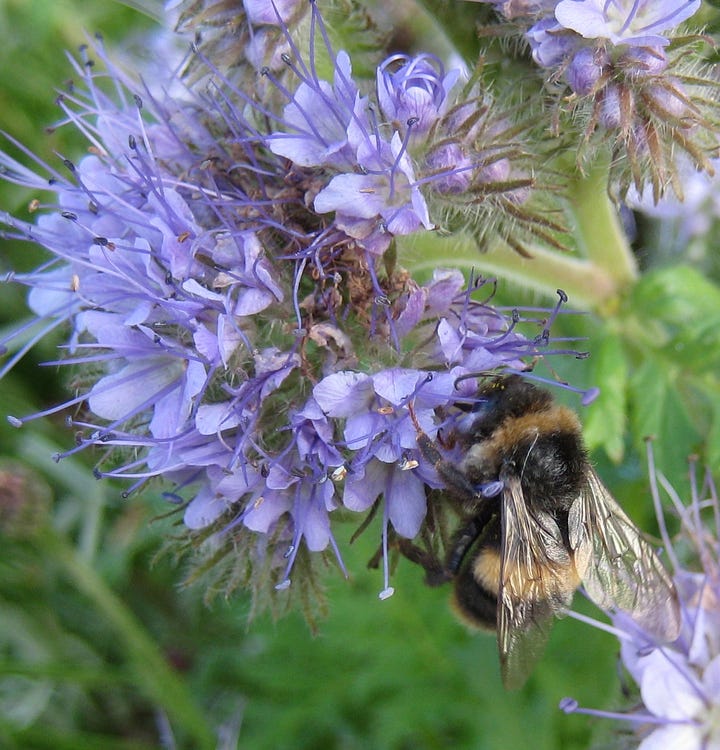

Bumblebees (bottom left above) and honeybees (bottom right above) are classified as social bees because they form colonies.
There are 24 species of bumblebee in the UK, although only 7 are widespread. Queen bumblebees nest in sites which are capable of housing her small colony – think old mouse burrows or grass tussocks. After emerging from winter hibernation and getting herself fit by feasting on pollen and nectar, she will begin the task of laying her eggs in her new nest, after which she will die. Only new queens, which have mated before hibernation, will overwinter to start the cycle again next spring.
Honeybees are different in that they form a colony which overwinters. It is for this reason that they produce honey which they feed on during the winter months. The queen can live for up to 4 years or so, tended by her ever-changing entourage of sterile female worker bees. Surprisingly, there is only one species of honeybee in the UK.
So that’s the kinds of bees we have in the UK, but why are they so important as far as pollination goes?
Pollination isn’t the raison d'être of bees’ existence: it is a by-product, as it were, of the bees’ food foraging activities. Other than water, bees need two things in order to survive: pollen and nectar. In a nutshell, at the same time as they gather pollen and nectar for food, they also carry the pollen to the next flower that they visit, and - hey-presto! – the flower is pollinated and much of our food source is secured. So, from our point of view, it is vital that bees and other pollinators don’t just survive, we need them to thrive.
Many commercial crops depend on bees for pollination, but that whole area is outside the remit of this article. Let’s concentrate more on how we, as gardeners, can help our buzzy friends. The simplest way is to provide them with food – ‘let gardens grow, where beelines end’ as Carol Ann Duffy says in her poem ‘Virgil’s Bees’ 1
So here is an unashamed plug for my latest book The Little Book of Plants for Pollinators: A Gardener’s Guide which is a handy resource for finding out what plants to put in your garden to attract and sustain a whole range of insect pollinators, not just bees. Please click here for more information.
1 Duffy, Carol Ann (2011) The Bees, Picador, London.
The ‘Chelsea Chop’
Some perennials respond well to what is known as the ‘Chelsea Chop’. I was going to say this isn’t some fashionable haircut, but in a way it is. At about the time of the Chelsea Flower Show (which is next week, 20th to 24th May) many gardeners cut back the new growth on a number of summer- and autumn-flowering herbaceous perennials to limit the size of the plant, and to control when it flowers.
Some merciless, secateur-toting individuals raze the plants to the ground, leaving the poor crowns looking like skinheads. I’ve never been entirely convinced by this approach. I just can’t bring myself to be so ruthless; I prefer to give mine a ‘short back and sides’, leaving some healthy-looking stubble to grow away again.
So how much actually is a ‘short back and sides’? Well, you can reduce the entire plant by as much as half. This will result in plants that are more robust and shorter so they will require less staking. And by removing the growing tips, more side shoots will be produced which will, in turn result in more flowers.
You could also select some stems at the front of the plant to have a haircut, leaving others at the back to grow away; a sort of ‘long back and short sides’ – this will give you a mixture of height and flowering time within the same plant.
In addition, if you have a drift of the same plant, you could give some a ‘short back and sides’ and leave others to let their hair grow naturally.
Not all perennials will respond to this type of pruning, however, but here are a few which received wisdom indicates seem to benefit from it:
Anthemis tinctoria (top left below), Campanula (tall-growing ones - top middle below), Echinacea (top right below), Helenium, Hylotelephium (upright forms), Nepeta (tall-growing ones), Penstemon (bottom left below), Phlox paniculata (bottom middle below), Rudbeckia (bottom left below), Solidago, Symphyotrichum (tall-growing ones)
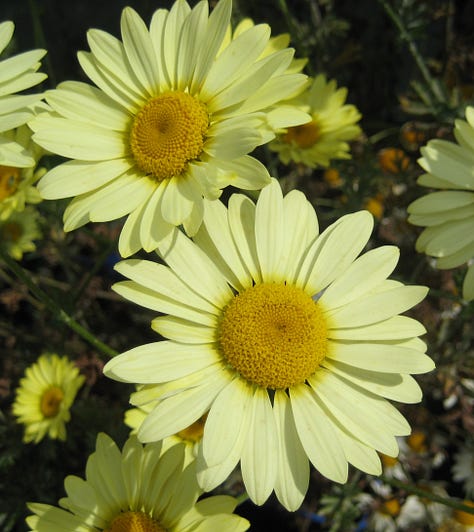
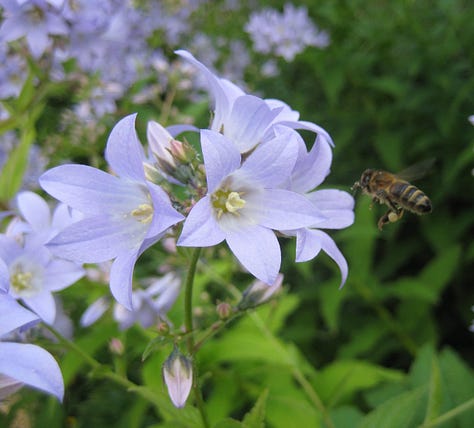
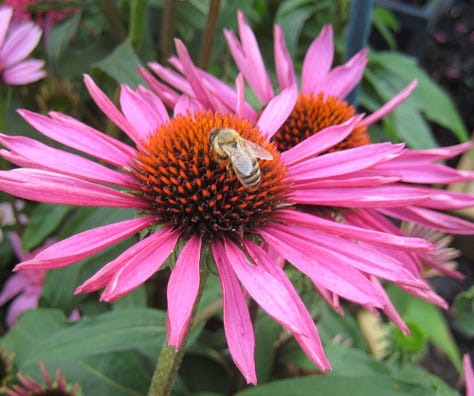
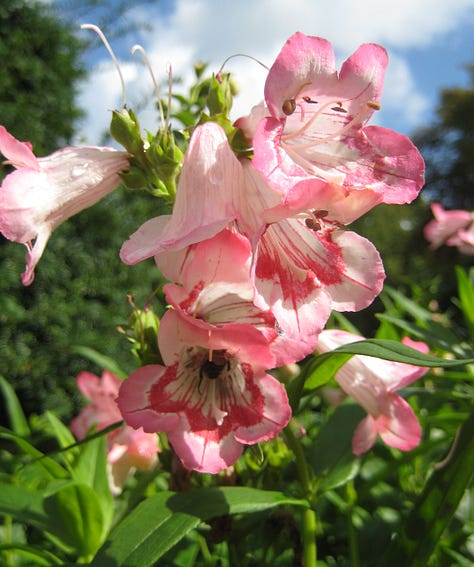


When you do cut anything back, remember to snip just above a leaf joint – this will prevent die-back.
So sharpen those scissors – I mean secateurs - and get snipping!
Gooseberries
It’s coming up to gooseberry time. And, well, gooseberries are one of those things in life that you either love or hate. I have never met anyone who is indifferent to them. I love them, especially lightly stewed in a little water and honey. I think that those who hate gooseberries must have been given under-ripe or a raw culinary variety to eat which would be enough to put anyone off.
Gooseberries have long been a speciality of Northern and Midlands counties. In the 1750s some Lancashire weavers founded gooseberry clubs, with their resulting shows, where they strived to grow and show the biggest, plumpest gooseberry. Interest soon spread to Yorkshire, Cheshire, Derbyshire, Staffordshire and Nottinghamshire and clubs and shows sprung up across the entire region. Shows are still staged today, particularly in Cheshire, although the oldest show, dating back to 1800, takes place in Egton Bridge in Yorkshire each August.
There are older varieties still available, such as ‘Lancashire Lad’ and ‘London’ although some do have a tendency to be on the tart side as far as flavour goes. Newer varieties, such as ‘Hinnonmaki Yellow’ and ‘Hinnonmaki Red’ are often much sweeter. As you can guess by the names the berries are of different colours which make a very attractive combination if you mix the fruits together.
You can expect to pick about 3kg of fruit from each bush, which should be planted 1.2 to 1.5m apart. To get the optimum harvest you will have to prune your gooseberry bushes. Here’s how.
In the spring of the first year after you have planted them you should remove all except five main stems, cutting them back to the base. The five remaining stems should be pruned back to 15-20cm. Each year after that there are two stages of pruning: in midsummer (mid-June to July) you should cut back the current season’s growth to five leaves, unless you want to extend the size of your bush, in which case you can leave some branches alone. Then in winter, prune all the side shoots growing from the ‘framework’ branches to one to three buds. You should also shorten the tips of the branches by about a quarter, cutting just above an outward facing bud.
So you’ve got your bumper crop of fruit, what are you going to do with it? There’s always jam, of course, but here’s a very easy recipe for a delicious gooseberry dessert. It’s a take on the classic Eton Mess, but instead of strawberries, use stewed gooseberries.
Ingredients
400g gooseberries, stewed in a little water and a tablespoon of honey (you can use a little elderflower cordial instead of the water and honey if you wish)
½ tbsp icing sugar
300ml double cream
4 readymade meringue nests
Method
Whip the double cream and the icing sugar together until soft peaks form when you remove the whisk.
Crush the meringue nests lightly.
Take 4 small sundae dishes and divide half the gooseberries, meringue, and cream between the dishes. Add another layer of each.
And there you have it - I told you it was easy!
Pictures credits: All my own: © Maureen Little except Leaf cutter bee: Barry Griffiths.





